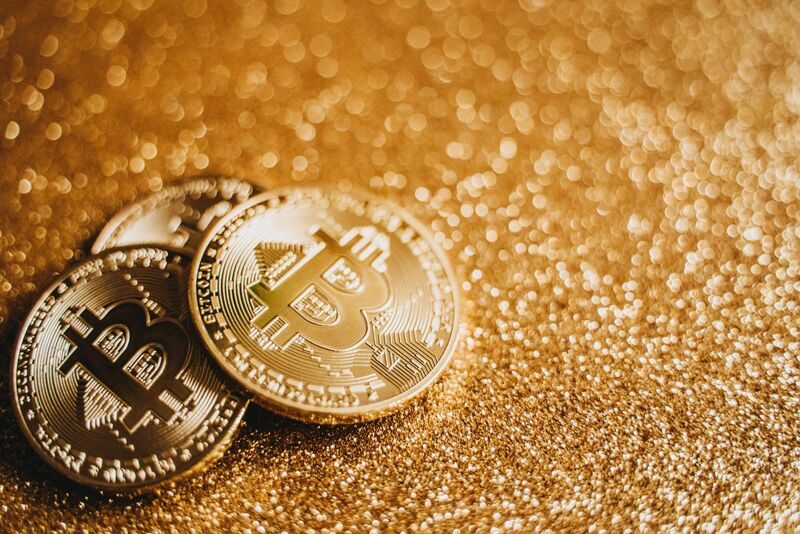
March 5, 2024 was a remarkable day in financial markets. It was the day that the price for both Bitcoin (BTCUSD) and gold (GCJ24) hit new record highs.
Bitcoin, the world’s largest cryptocurrency, surged to a record above $69,000 — beating the previous peak it reached in November 2021, during the pandemic.
Meanwhile, spot gold rose to a new peak of $2,141.79 an ounce, surpassing the previous high set in early December. It blew through the previous triple top at around $2,070 with ease.
The twin records for the market-leading cryptocurrency and the precious metal were the first simultaneous records for the two since Bitcoin first came onto the scene more than a decade ago.
At first glance, the simultaneous records might seem odd. Gold has acted as a “safe haven” from turmoil and a store of value for literally centuries, while Bitcoin is considered by many to be just a speculative asset that is a leveraged play on bullishness in tech.
Bitcoin and Gold Both Bet on Loose Money
However, Bitcoin and gold are “brothers.” Both asset classes should be viewed as beneficiaries of expectations of looser monetary policy. Markets have built in an expectation that the first interest rate cut from the Fed is likely to come no sooner than June.
And make no mistake - even before any interest rate cuts are announced, financial conditions in the U.S. are very easy currently. For this, I always like to look at the data that comes from the Federal Reserve itself.
Every Wednesday morning, the Chicago Fed publishes the National Financial Conditions Index (NFCI), which provides a comprehensive weekly update on U.S. financial conditions in money markets, debt and equity markets, and the traditional and “shadow” banking systems.
One look at this data tells you immediately that current financial conditions are looser than they were before the Fed first raised interest rates. It’s as if the rate hikes never happened!
The Rise of Spot Bitcoin ETFs
Separately, the price of BTC has surged since U.S. regulators approved 11 spot BTC exchange traded funds (ETFs) in January. These spot Bitcoin ETFs have made it easy for investors to add direct BTC exposure, without the numerous risks associated with largely unregulated crypto exchanges.
More than $7.5 billion worth of capital has flowed into the newly approved bitcoin ETFs since their first day of trading on Jan. 11, according to crypto investment group CoinShares. This new tidal wave of capital into the cryptocurrency market has contributed to gains of more than 60% for BTC just since the start of this year.
On the same day BTC hit a new record high, investors poured a record amount of cash into BlackRock’s Bitcoin ETF. The iShares Bitcoin Trust (IBIT) pulled in $788.3 million, notching its 37th consecutive daily inflow. The fund has now swelled to $10.3 billion in assets under management (AUM).
Another big factor behind BTC's surge is the upcoming upgrade to the network — the so-called “halving” — scheduled for next month This will slow the circulation of available coins. It reduces the mining rewards by half, decreasing the rate at which new Bitcoins are generated.
What’s Behind Higher Gold Prices?
And meanwhile, the price of gold has surged to its own record high. This was partially driven by growing expectations for U.S. interest rate cuts, as well as investors hunting for safe-haven assets amidst geopolitical turmoil.
Attacks on shipping routes in the Red Sea show escalating Middle East tensions. China’s economic woes and the U.S. presidential election at the end of the year also make for a potentially volatile year.
But there have also been many months of prodigious gold buying by both central banks (especially in emerging markets) and Chinese investors who are desperate for a safe haven from falling real estate and stock prices in China.
With gold, the Western investor is barely involved. Gold continues to flow to the East in a veritable flood.
This can be seen by looking at the increasing disconnect between gold spot prices and outflows from bullion-backed ETFs. Holdings in SPDR Gold Shares (GLD), the world’s largest such ETF, fell by 0.3% on Monday to the lowest total level since July 2019, according to data compiled by Bloomberg. Meanwhile, spot gold continues to rise.
2 “Anti-Fed” ETFs
I personally own both Bitcoin and gold through ETFs.
With gold, I prefer to own ETFs that are backed by physical gold. A good example of this is the abrdn Physical Gold Shares ETF (SGOL). It’s currently around $20.50, and a move to $25 would not surprise me.
With BTC, I’m sticking with the largest of the 11 new Bitcoin ETFs - the aforementioned iShares Bitcoin Trust (IBIT). It’s trading around $38. Many options traded on Bitcoin are pointing to a price around $80,000, so IBIT can go much higher.








